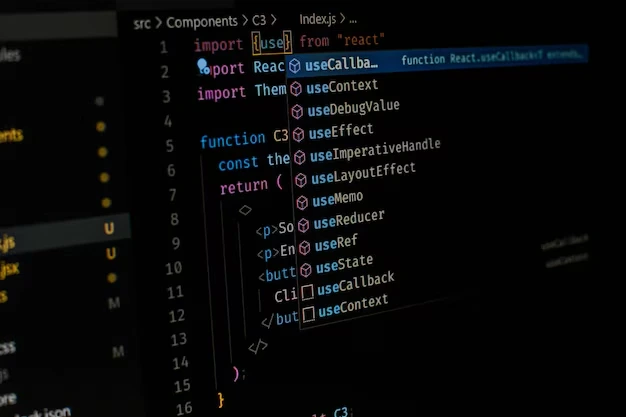It is obvious how flexible and elegant higher-order components are in the world of React. They create a sort of abstraction, and component logic becomes reusable, thereby opening up new opportunities to improve code efficiency.
But, now we can ask ourselves the question: what exactly is the higher-order component in react?
Generally speaking, HOCs are functions—like some component that takes one and gives you another with some extra properties—and this pattern is inspired by ideas commonly found in functional programming. This is one of the leading ideas of composition in React.
This guide will examine some of the significant challenges with HOCs. What is the point of using a higher-order component in React? How do we apply them, and in what context? We will also discuss how they enhance your React workflow as a developer.
No matter if you are a beginner or intermediate React developer, this guide will assist you in understanding what a higher-order component in React is. After reading this, you will be competent enough to use HOCs in your projects.
Without much ado, let’s begin by exploring order components, but before that, let’s spice up the levels of the mystery.
Grasping the Concept of Higher Order Components (HOCs)
Higher-order components are basic in React; they allow you to abstract the logic of a functional component and allow you to keep your code decoupled. If you decide to add HOC to a component, you will introduce new functionality without needing to make any changes to the originally wrapped component.
Higher order’ may sound abstract, but it’s actually simple and follows a simple pattern: functions that take in other functions and components. This is the foundation of HOCs that can improve behavior, add extra props, or flip what component rendering means. What is a higher-order component in React really all about? It’s the recipe of ‘composition, not inheritance.’
It is realized that functional programming languages tend to pay more attention to the design of functions that are applied as parameters for other functions. React needs to catch up in this, since it allows developers to create HOCs that accept components as arguments and return components. This follows the orthodoxy of functional programming, stating that all components should be assimilated.
With HOCs, cross-cutting concerns can be better handled in React applications. You are able to have authentication, logging, or even state management, allowing you to target these features against different components. The versatility of HOCs can fit into different React patterns, and it guarantees that your components will be primed and prepped for their primary functions. Some of the main goals of HOCs are the following:
- To isolate truly cross-cutting concerns
- To have a single source of truth, in code, for a UI feature so there is no need to duplicate it
- To add features to existing components
HOCs extend the higher-order concept of code usage and management practices in React-built systems. Proper knowledge of these concepts can dramatically improve your React development practices.
Starting with Your First Higher Order Component
When building a higher-order component, you will use three things. First, you must understand that an HOC is just a function that takes a component and returns another component. That indirection lets you put logic into your components, which makes them more powerful.
First, this code block requires you to establish a function that accepts as a parameter a component from which you are going to derive. Then, you create a class or a functional component within this very code block, attempt to do some logic you might have wanted to originally, and finally return the component you have created and all the logic that you’ve managed to map.
For example, imagine you only need such a simple use case whereby you need a component that logs what it is doing. To do this without having to modify the component in question, a custom function should be encapsulated, including the command to log on to those events or states, which are virtually synonyms for methods.
With HOCs, components are immutable because they do not allow the modification of the props of the component passed to them, thus adhering to the code ethics of React. Provided you have adhered to the correct structure of your high-order component, you will be able to style your application even more complexly.
This clearly defines a higher-order component in React since it can be used for several Use Cases, thereby making the development useful. In apps, repetition should be avoided since redundant code exists.
Tools providing HOC functionality support server rendering; hence, fetching data with HOC is incredibly useful. Higher-order components are also helpful in cases where fetching data may need to be done multiple times. HOCs can fetch and transmit the data outside, covering the whole functionality of the data retrievals. HOCs also provide the possibility to contribute by the reuse structure of an app through access to a container. The wrapping component is able to reuse access to the child where its configurations are proper. Thus, the components that will only provide coverage will be done in authorized end-user access, and the HOC can be a component-based wrapper above permission.
Theme and Style Management
Theming and styling can also benefit through a massive win in terms of HOC designs. HOCs permit, for instance, style logic to wrap components for constant improvement of themes throughout the application. Therefore, this leads to the possibility of theme change without disturbing codes meant for individual components, which upsurges the degree of freedom. Examples are authentication and authorizations, data fetching, and state management. HOCs are flexible assets that can be used to develop projects in React. They solve cross-cutting issues effectively and provide an approach fitting all sorts of demands. Using HOCs, developers can develop strong, maintainable, challenging applications.
Benefits of Using Higher Order Components in React
Higher-order components are of high benefit during React development processes. They make it easier for the developer to reinforce the same problems around various areas within the application. Let’s take a look at some of these advantages.
- Reusability and Composition: HOC’s great strength lies in encouraging reusability and composition of the code. They enable the developer to define the functionality that can be used in different components without any hassle. This means less code to maintain and quicker implementation.
- Separation of Concerns: Another advantage is the reduction of scope stacking. Logic in HOCs can be set up so that the components do rendering only and nothing else. This means that the structure of the components will be neat and simple.
Abstraction and Flexibility
To conclude, high-order components also allow for greater abstraction and flexibility. The components can be made dynamic and flexible to easily accommodate different situations. This makes HOCs quite useful in building bigger, more modular applications.
Wildnet Technologies is a leading Design and Development Company in India that has helped 4,100+ clients complete their 8,000+ development projects, whether website, app, or custom software development.
Read More
- Flutter Vs. React Native Framework
- PoC, Prototype, and MVP: How do they differ?
- The Cost of Mobile App Development in 2024: A Must-Know for Businesses
- The World’s First AI Software Engineer, Devin & India’s First Devika
- AI-Driven Web Development: The Future of Web Development Services
- Progressive Web Apps (PWAs): A Step-by-Step Guide to Build them
Faq
Ques1. What is the difference between a pure component and a higher-order component?
- A pure component optimizes re-rendering by shallowly comparing props and state, re-rendering only when changes are detected. A higher-order component (HOC) is a function that takes a component as an argument and returns an enhanced version, adding functionality without modifying the original component.
Ques2. What is the difference between a higher-order function and a higher-order component?
- A higher-order function takes another function as input or returns a function as output. A higher-order component (HOC) is a React pattern that takes a component as input and returns a modified or enhanced version of that component.
Ques3. What are the benefits of HOCs in React?
- HOCs enable code reuse, logic separation, and cross-cutting concerns by adding functionality to multiple components without altering their code, keeping components clean and reducing redundancy.
Ques4. What are the two types of components in React?
- The two types are functional components, which are simple and stateless, and class components, which are more feature-rich, supporting lifecycle methods and state (though functional components with hooks can now also handle state and side effects).







